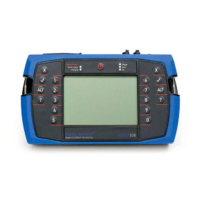Section 11 — Balancing Rotors
222
Channel Position
Using channel (CH) position is optional. You can use it in conjunction with
Reference Mark. The instrument uses this information to calculate where
on the rotor you should place your trial weights after taking an initial
reading. The aim is to reduce the initial vibration in order to maximize
the accuracy of the trial weight readings. Your instrument will
recommend a trial weight angle based on the:
• Phase of the initial reading.
• Angle between the tachometer and sensor (CH Position).
• Angle between the tachometer reflective tape and the weight
reference mark on the rotor (Reference Mark).
You need to enter both the CH Position and the Reference Mark location.
This will enable your instrument to calculate the trial weight angle.
Once you take the initial reading, your instrument will display the
suggested trial weight angle in the upper right of the screen.
Angles are measured in the direction you designate as your Weight
Orientation (i.e. with rotation or against rotation).
If you are performing a dual plane balance, you should only use this
option in cases where each balance plane is physically close to its
sensor, and the two planes are separated by a distance greater than the
rotor diameter. For overhung rotors, this option should only be used for
single plane balancing on the closest bearing and balance plane, to help
with reducing the static imbalance. The CH2 sensor and weight
reference mark must be in line with that of CH1.

